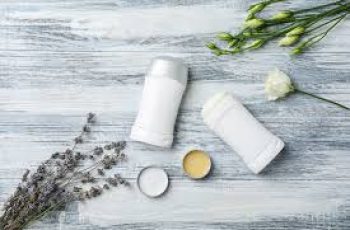
How to Remove Makeup: The Best Expert Tips to Keep Your Face Completely Clean
You’ll be surprised to find out that I’m still talking about how to remove makeup these days. I know you’re all experts at this by now, but it’s worth noting that even with all the right techniques and products, we still go to bed with dirty faces.
But before you run screaming for the hills, I’ve put together some super easy and quick tips to help you make sure your face is completely clean and all traces of makeup are gone.
Tip 1: Let the Products Do Their Work
When you’re quick with your makeup removal, you can’t help but pick up your cleanser and imitate Sonic the Hedgehog’s moves. But you have to take your time to get your face squeaky clean and makeup-free. What I mean by that is that you need to let the cleanser do all the work to start dissolving the makeup. I find that letting the product sit unnoticed for about 2 minutes is the best option to ensure that the makeup on your face is removed and that no residue is left on your cute white pillowcase!
The easiest way to achieve this is as follows:
Wet your face with warm water.
Pick up your makeup remover and apply it all over your face. Make sure the makeup remover is eye-safe.
Now let the product do its work. You can use this time to brush your teeth, killing two birds with one stone.
Next, wipe off the product with a damp washcloth. Using warm water gives the washcloth an extra luxurious, spa-like feel while also opening up the pores to prepare them for the next step in your routine.
This final step is up to you and your preferences. You can follow up with a serum and moisturizer or double cleanse (more on this later!)
This may sound like a daunting task, but you have to remember that makeup removers are designed to remove makeup (fun fact) and you don’t need to break a sweat to get your makeup off your face as quickly as possible. Specially chosen ingredients take time to dissolve makeup like foundation so that it can be removed from your face with a washcloth, face cloth, or sponge.
Tip #2: Avoid using makeup wipes
There’s no denying that makeup wipes are simple, convenient, and get the job done quickly! As useful as these wipes are, there are many downsides to using them on your skin too frequently and they’re not very eco-friendly.
While using wipes is a good starting point for removing certain products, it shouldn’t be the last step in skin cleansing. Use a makeup wipe for a quick wipe and then cleanse thoroughly. This will penetrate the pores and remove any residue and bacteria. What not to forget is excess sebum (the natural oil produced by the skin), which can build up and lead to blemishes like pimples, blackheads, and acne if left unattended.
Tip 3: Find the best cleanser for your skin
The main purpose of a cleanser is to “clean” your face of impurities and products. One aspect that is often forgotten when using a cleanser is to use one that is right for your skin type. It’s a simple thing that people don’t really think about, but it has a huge impact on the overall look and feel of your face.
Makeup removers, balms, creams, lotions, and water come in different formulas. All of these serve their respective purposes, and it all depends on the texture and skin type you prefer. For example, dry skin can use a balm that provides a nourishing feeling when applied to the face.
Tip 4: Don’t use a face cleanser to remove makeup
Using a face cleanser to remove makeup is a bit like taking a shower with your clothes on. Using it before removing foundation and other makeup does not really do your skin any good. If anything, move everything on your face, but don’t remove it.
By all means, continue using a cleanser, but remove your makeup with it before washing your face. Industry experts call this the double cleansing technique, and it’s the most effective way to ensure clean, makeup-free skin. Yes!
Tip #5: How to Remove Mascara
Mascara, eyeliner, liquid eyeliner—none of these are going away anytime soon, but it’s worth noting that we’re still not removing our eye makeup properly. Here’s how to remove every last bit of eye makeup and save your poor sheets from black stains!
Soak a cotton swab in makeup remover. Micellar water works great and is gentle on the eyes.
Dab the soaked cotton swab along your eyelids and lashes to give the product enough time to dissolve the stubborn mascara.
Next, take a cotton pad with a small amount of makeup remover and hold it against your lashes. Once you’ve given the product enough time to work, you can move the cotton pad toward your lashes to take away any mascara residue.
If you notice some mascara or eyeliner, etc., left behind, repeat the previous steps.
As tempting as it may be, if you remove a dollop of mascara from your lashes, they will weaken and start to fall off.
Tip 6: Don’t forget to remove makeup from other areas of your face.
This really only applies to those who apply foundation to other areas of their face, such as: B. On the ears and neck for a unified look. These areas should not be forgotten when cleansing.
Take a washcloth and wet it with warm water
Wipe areas like the neck and ears where you apply foundation, bronzer, etc.
Next, take the cleanser you used on your face and apply the product with your fingertips
Use the same washcloth to wipe off the cleanser until all makeup is removed
When cleaning these different areas, don’t forget your hairline as this is where makeup tends to accumulate
Tip 7: Don’t forget the rest of your skin care routine
You’ve just double cleansed and your skin feels super fresh and refreshed. I wouldn’t blame you if you wanted to keep that feeling going for a little longer.
Regardless of your skin type, it’s recommended that you follow the rest of your skin care routine as usual. The reason is that the clean, radiant feeling after cleansing changes. Oily skin produces oil, while dry skin stays extremely tight and uncomfortable. To avoid this, apply a moisturizer to keep your skin barrier healthy and the oil-water balance in place.
So, here are some tips and tricks that industry experts believe will help you sleep easier knowing you don’t have to wear any makeup!


